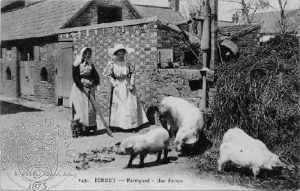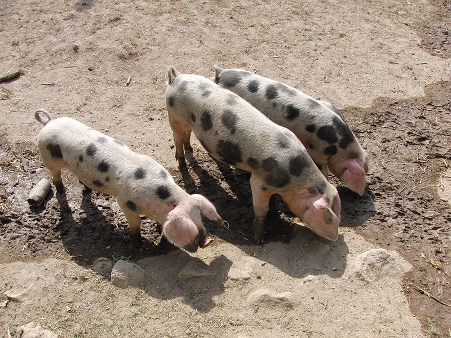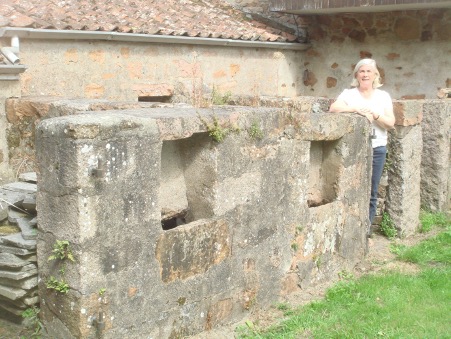Where have all the pigs gone? Over the hills and far away? At least into the different country of temps passé. In the Autumn 2014 issue of RURAL, Marie-Louise Backhurst looked back on pig keeping in the Island
THE humble pig was once an ubiquitous part of life for almost everyone in Jersey. Yet by the 1980s there were only three pig breeders in the Island and today [2014] there is only one left. The house pig was kept on every farm and even in the gardens of town houses; it was fattened for Christmas and would then provide a family with enough meat for several months.
In 1815 Thomas Quayle said that there were two kinds of pigs in the Island: the ‘most frequent is white, long-legged, flap-eared…. Another smaller species is sometimes seen; spotted, short legged, and of a rounder form.’ From this description it would seem that the larger pig may have similar to what is now called the British lop-eared pig which was quite common in Devon and Cornwall in the 19th Century; the smaller one resembles a pig from the Bayeux area in Normandy.
The pigs were fed on parsnips, cabbage leaves and some buck-wheat , as well as acorns and potatoes. When the pig was killed at Christmas at 20 months old, it could weigh as much as 400-450lbs.
Pigs could not graze freely in Jersey. After the harvest cattle could roam on the fields, this was called banon, but pigs and goats could not graze on the fields. There was a due payable to the landowner, which was called porcage or pannage , which then gave a right to allow pigs to run in woodland and eat the acorns.
The pigsties were quite substantial and usually made of granite. From the mid 19th Century they were probably larger than might be expected; this may have been because of the necessity to feed the French farmworkers who came to work in the potato fields. Many pigsties have been demolished but some of the finest ones are still in existence.
Several pigsties in the north of the Island have an intriguing domed roof; it seems they were built by the same man. Six of these are still in existence.
When the pig was slaughtered, there were several ways of ensuring that the meat could be preserved. Salting troughs were quite common and may have been made of Chausey granite. In the large chimneys there were hooks on which the hams could be hung and thereby smoked.
Some pork may also have been air dried in the kitchen.
Every part of the pig was used, including the trotters, snout, bladders, kidneys, liver and intestines. The skin could be tanned and there were several tanneries in St Helier as well as in other parts of the Island.
In the Place du Marché between Vine Street and Church Street was a building which housed the shambles (the butchery) and a butter and lard (pig fat) market. In 1804 when the new market was built in St Helier the pork butchers were sited in a specific area. Until quite recently the pork market was in the area leading directly off Hilgrove Lane. Till’s the butcher had a butcher’s shop on Hilgrove Lane with a charcuterie employing a Breton charcutier.
In 1834 Henry Inglis extolled the local pigs: ‘pork is excellent, and in the best season, decidedly superior to any I have tasted in England. There is an immense consumption of it during the winter months. In Jersey it generally sells about 5d per lb.’ Barrels of salted pork were also imported; these may have been used by the shipping fleet for provisioning for the Newfoundland cod banks and elsewhere.
The well-known Bean Crock-le piot et des pais au fou- was traditionally made with several varieties of beans and a pig’s trotter. It would be cooked in baker’s ovens after the bread had been baked.
Pigs were vital for survival during the German occupation and there are many stories of pigs being hidden in beds, so as to evade capture by the occupying forces. Pigs had to be registered and the owners who had not done so were prosecuted.
Pig-keeping on a large scale can be smelly for neighbouring properties and in a small Island this can cause problems. Nevertheless, more local pigs should be encouraged, as different breeds can produce better tasting pork than the mass-produced imported pork. Pigs could also be fed on potatoes that are surplus to requirements.









